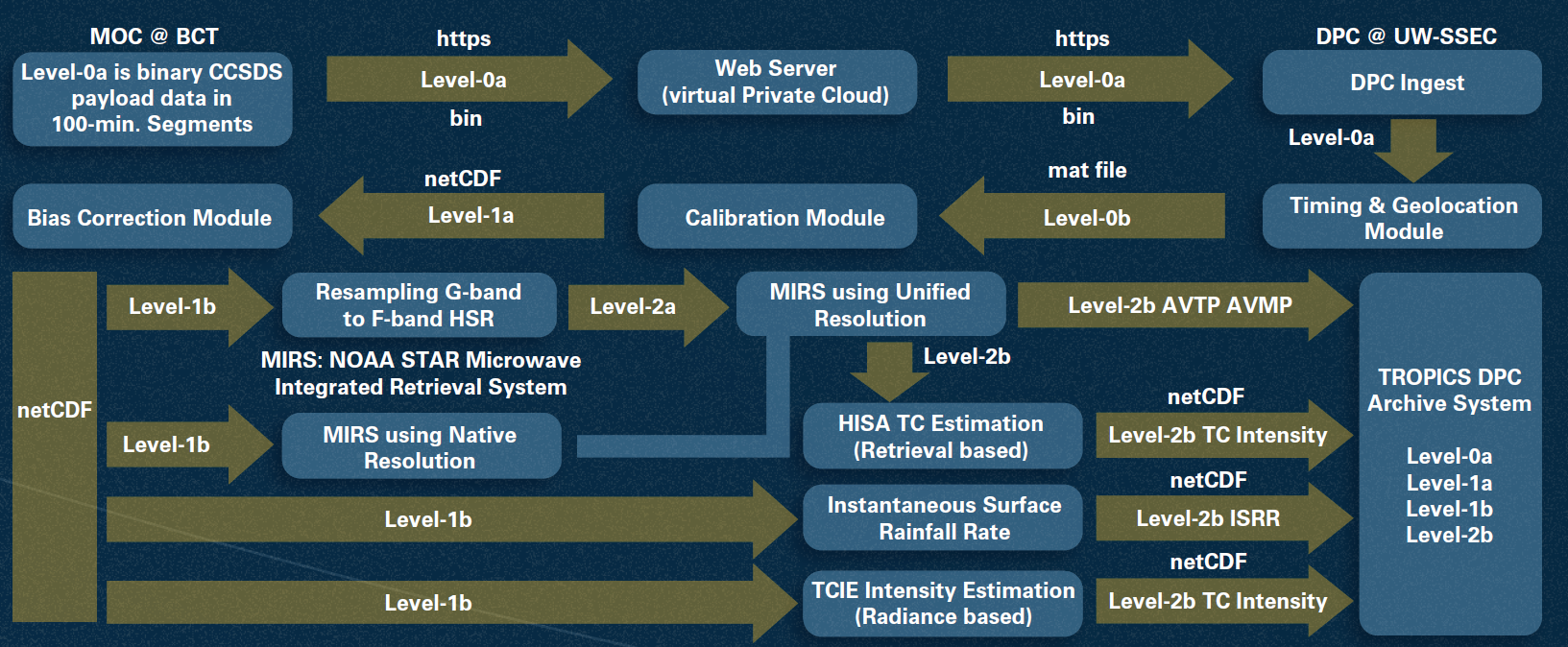TROPICS Mission Implementation
After the launch failure in June 2022 that lost two CubeSats, NASA decided to rebid the remaining two launches and Rocket Lab was awarded the contract with the goal of launching before the 2023 North Atlantic hurricane season.
The TROPICS constellation now has two CubeSats in each of two orbital planes with the following launch parameters: equally spaced RAAN (±10° tolerance), 550 km altitude (±20 km tolerance), 30° inclination (±3° tolerance).
The TROPICS constellation now has two CubeSats in each of two orbital planes with the following launch parameters: equally spaced RAAN (±10° tolerance), 550 km altitude (±20 km tolerance), 30° inclination (±3° tolerance).
One CubeSat (TROPICS-01), named the TROPICS Pathfinder, launched before the constellation on 30 June 2021 on SpaceX Transporter 2 with the Maverick Space Systems as the launch integrator.
Analyses have shown orbit lifetime of 9 years, well over the expected mission lifetime of one year and well in advance of the 25-year de-orbit requirement. The new two-orbital-plane configuration still yields better than 60-minute median revisit rates with spatial resolution and swath width comparable to current state-of-the-art sensors.
Analyses have shown orbit lifetime of 9 years, well over the expected mission lifetime of one year and well in advance of the 25-year de-orbit requirement. The new two-orbital-plane configuration still yields better than 60-minute median revisit rates with spatial resolution and swath width comparable to current state-of-the-art sensors.
Note: video still shows three orbital planes Video Credit: Sean Loughran and Nick Zorn (MIT LL)
Command, Control, Communication and Data Elements
for the TROPICS Constellation of CubeSats

Continuous, sustained, high-refresh imaging and sounding observations will profoundly improve our fundamental
understanding of the thermodynamic and microphysical processes driving high-impact storms.

The TROPICS Data Processing Center is at the University of Wisconsin - Madison Space Science and Engineering Center (SSEC)
and is providing the following data products to the Goddard Earth Sciences Data and Information Services Center (GES DISC) Distributed Active Archive Center at https://disc.gsfc.nasa.gov/:
Pathfinder Data Product Maturity Levels Tracker: https://tropics.ssec.wisc.edu/











